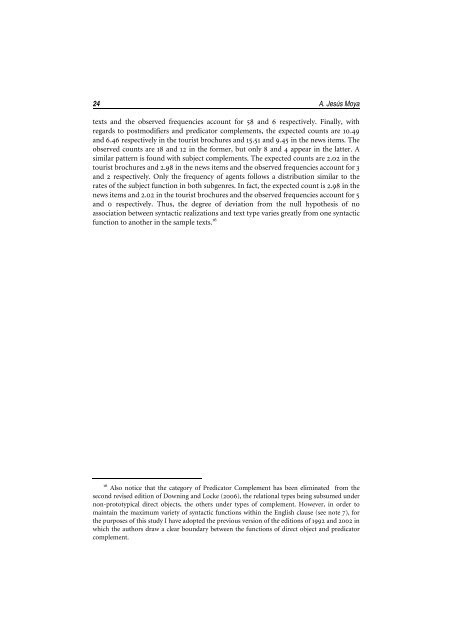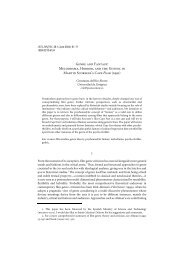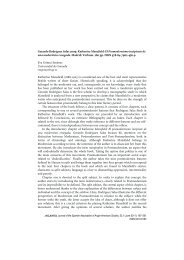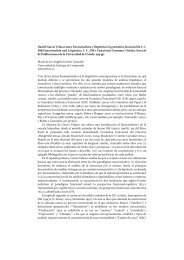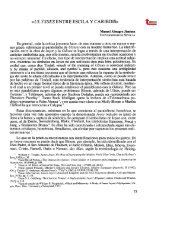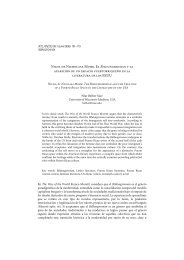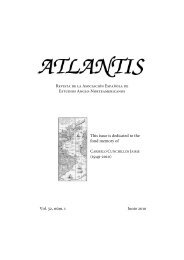On Pragmatic Functions and their Correlation with Syntactic - Atlantis
On Pragmatic Functions and their Correlation with Syntactic - Atlantis
On Pragmatic Functions and their Correlation with Syntactic - Atlantis
You also want an ePaper? Increase the reach of your titles
YUMPU automatically turns print PDFs into web optimized ePapers that Google loves.
24 A. Jesús Moya<br />
texts <strong>and</strong> the observed frequencies account for 58 <strong>and</strong> 6 respectively. Finally, <strong>with</strong><br />
regards to postmodifiers <strong>and</strong> predicator complements, the expected counts are 10.49<br />
<strong>and</strong> 6.46 respectively in the tourist brochures <strong>and</strong> 15.51 <strong>and</strong> 9.45 in the news items. The<br />
observed counts are 18 <strong>and</strong> 12 in the former, but only 8 <strong>and</strong> 4 appear in the latter. A<br />
similar pattern is found <strong>with</strong> subject complements. The expected counts are 2.02 in the<br />
tourist brochures <strong>and</strong> 2.98 in the news items <strong>and</strong> the observed frequencies account for 3<br />
<strong>and</strong> 2 respectively. <strong>On</strong>ly the frequency of agents follows a distribution similar to the<br />
rates of the subject function in both subgenres. In fact, the expected count is 2.98 in the<br />
news items <strong>and</strong> 2.02 in the tourist brochures <strong>and</strong> the observed frequencies account for 5<br />
<strong>and</strong> 0 respectively. Thus, the degree of deviation from the null hypothesis of no<br />
association between syntactic realizations <strong>and</strong> text type varies greatly from one syntactic<br />
function to another in the sample texts. 16<br />
16 Also notice that the category of Predicator Complement has been eliminated from the<br />
second revised edition of Downing <strong>and</strong> Locke (2006), the relational types being subsumed under<br />
non-prototypical direct objects, the others under types of complement. However, in order to<br />
maintain the maximum variety of syntactic functions <strong>with</strong>in the English clause (see note 7), for<br />
the purposes of this study I have adopted the previous version of the editions of 1992 <strong>and</strong> 2002 in<br />
which the authors draw a clear boundary between the functions of direct object <strong>and</strong> predicator<br />
complement.


